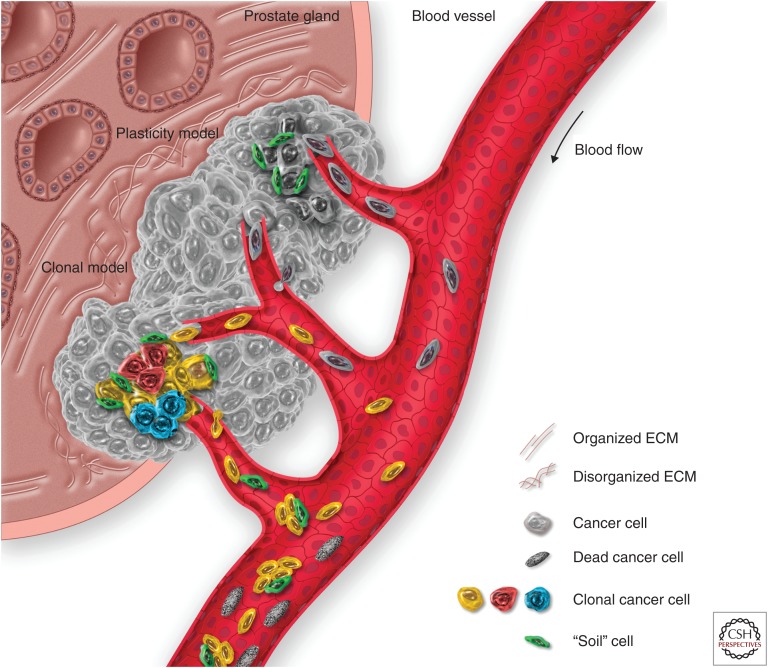Figure 2.
The metastatic spread of prostate cancer (PCa) from the primary site. The primary lesion growth is characterized by a dysregulation of the prostate architecture, inducing changes in the extracellular matrix (ECM) composition and architecture, together with the induction of an inflammatory state that activates stromal cells and favors the recruitment of blood vessels to the lesion. As the tumor recruits new blood vessels, the systemic dissemination of cancer cells (in the form of circulating tumor cells, or CTCs) can take place. Two are the main models that explain the metastatic spread: “plasticity model” and “clonal model.” According to the plasticity model, as the cancer cells progress through malignancy, they may collect hits that make them fit for the metastatic process. The clonal model, on the other hand, theorizes that within the heterogeneous cancer cell subpopulations, clones with different fitness are generated, including some with the characteristics required for the metastatic spread. In addition, clusters of cells may form between spreading cancer and stromal cells from the primary lesion, the latter forming the “soil” cells that can facilitate the spreading and the survival of CTC. However, most of the CTCs will not survive in the bloodstream and will circulate as dead CTCs until clearance.

